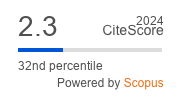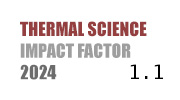ABSTRACT
This study explores the application of machine learning techniques to forecast atmospheric pollutant concentrations, focusing on NOx, NO2, and NO over the period from January 1, 2017, to December 1, 2017. Accurate prediction of air pollutant levels is crucial for effective environmental monitoring and public health protection. The research employs the Gaussian mixture model and decision tree model to analyze and predict pollutant data. The methodology encompasses rigorous data preprocessing steps, including cleaning and normalization, followed by model training and validation using cross-validation techniques to enhance robustness. Model performance is assessed through multiple metrics, including entropy, log-likelihood, normalized entropy criterion, integrated completed likelihood, akaike information criterion, and Bayesian information criterion. Results demonstrate that the Gaussian mixture model outperforms other approaches in predicting air pollutant levels, offering improved accuracy and reliability for environmental forecasting.
KEYWORDS
PAPER SUBMITTED: 2024-06-24
PAPER REVISED: 2024-09-10
PAPER ACCEPTED: 2024-10-12
PUBLISHED ONLINE: 2025-01-25
THERMAL SCIENCE YEAR
2024, VOLUME
28, ISSUE
Issue 6, PAGES [4979 - 4989]
- Patil, R. M., et al., A Literature Review on Prediction of Air Quality Index and Forecasting Ambient Air Pollutants Using Machine Learning Algorithms, Int. J. Innov. Sci. Res. Technol., 5 (2020), 8, pp. 1148-52
- Maltare, N. N., Vahora, S., Air Quality Index Prediction Using Machine Learning for Ahmedabad City, Digital Chemical Engineering, 7 (2023), 100093
- Sharma, N., et al., Forecasting Air Pollution Load in Delhi Using Data Analysis Tools, Procedia Computer Science, 132 (2018), Jan., pp.1077-1085
- Dun, M., et al., Short‐Term Air Quality Prediction Based on Fractional Grey Linear Regression and Support Vector Machine, Mathematical Problems in Engineering, 1 (2020), 8914501
- Samad, A., et al., Air Pollution Prediction Using Machine Learning Techniques - An Approach to Replace Existing Monitoring Stations with Virtual Monitoring Stations, Atmospheric Environment, 310 (2023), 119987
- Mani, G., Viswanadhapalli, J. K., Prediction and Forecasting of Air Quality Index in Chennai Using Regression and ARIMA Time Series Models, Journal of Engineering Research, 10 (2022), 2A, pp. 179-94
- Liu, H., et al., Air Quality Index and Air Pollutant Concentration Prediction Based on Machine Learning Algorithms, Applied Sciences, 9 (2019), 4069
- Idroes, G. M., et al., Urban Air Quality Classification Using Machine Learning Approach to Enhance Environmental Monitoring, Leuser Journal of Environmental Studies, 6 (2023), 2, pp. 62-68
- Noviandy, T. R., et al., Ensemble Machine Learning Approach for Quantitative Structure Activity Relationship-Based Drug Discovery: A Review, Infolitika Journal of Data Science, 25 (2023), 1, pp. 32-41
- Almaliki, A., Abdessamed, Derdour, A., Earning Methods, Sustainability, 15 (2023), 13168
- Menezes, F., Popowicz, G. M., Acid Rain and Flue Gas: Quantum Chemical Hydrolysis of NO2, Chem. Phys. Chem., 23 (2022), 202200395
- Ju, T., et al., A New Prediction Method of Industrial Atmospheric Pollutant Emission Intensity Based on Pollutant Emission Standard Quantification, Frontiers of Environmental Science and Engineering, 17 (2023), 8
- Gomez, D., et al., A New Approach to Monitor Water Quality in the Menor Sea (Spain) Using Satellite Data and Machine Learning Methods, Environmental Pollution, 286 (2021), 117489
- Xia, H., et al., Dioxin Emission Prediction Based on Improved Deep Forest Regression for Municipal Solid waste Incineration Process, Chemosphere, 294 (2022), 133716
- Mueller, N., et al., Health Impact Assessments of Shipping and Port-Sourced Air Pollution on a Global Scale: A Scoping Literature Review, Environmental Research, 216 (2023), 114460
- Muruganandam, N. S., Arumugam, U., Dynamic Ensemble Multivariate Time Series Forecasting Model for PM2. 5, Computer Systems Science and Engineering, 44 (2023), 979
- Saraiva, E. F., et al., An Integrated Approach for Making Inference on the Number of Clusters in a Mixture Model, Entropy, 21 (2019), 1063
- Carlsson, K. C., et al., Modelling Subpopulations with the $ MIXTURE Subroutine in NON-MEM: Finding the Individual Probability of Belonging to a Subpopulation for the Use in Model Analysis and Improved Decision Making, The AAPS Journal, 11 (2009), 1, pp. 148-154
- Arshad, U., et al., Development of Visual Predictive Checks Accounting for Multimodal Parameter Distributions in Mixture Models, Journal of Pharmacokinetics and Pharmacodynamics, 46 (2019), Apr., pp. 241-250
- Pallathadka, H., et al., Classification and Prediction of Student Performance Data Using Various Machine Learning Algorithms, Materials Today: Proceedings, 80 (2023), Part 3, pp. 3782-3785
- Hamdi, M., et al., Forecasting and Classification of New Cases of COVID 19 Before Vaccination Using Decision Trees and Gaussian Mixture Model, Alexandria Engineering Journal, 62 (2023), Jan., pp. 327-333
- Ranka, S., Singh, V., CLOUDS: A Decision Tree Classifier for Large Datasets, Proceedings, 4th Knowledge Discovery and Data Mining Conference, Manchester, UK, 1998, Vol. 2. pp. 2-8
- Zhao, L., et al., Decision Tree Application Classification Problems with Boosting Algorithm, Electronics, 10 (2021), 1903
- Sun, R., et al., A Gradient Boosting Decision Tree-Based GPS Signal Reception Classification Algorithm, Appl. Soft Comput., 86 (2020), 105942
- Cheng, K. C., et al., Establishing a Multiple-Criteria Decision-making Model for Stock Investment Decisions Using Data Mining Techniques, Sustainability, 13 (2021), 3100
- Li, Y., Predicting Materials Properties and Behavior Using Classification and Regression Trees, Materials Science and Engineering A, 433 (2006), 1-2, pp. 261-268

